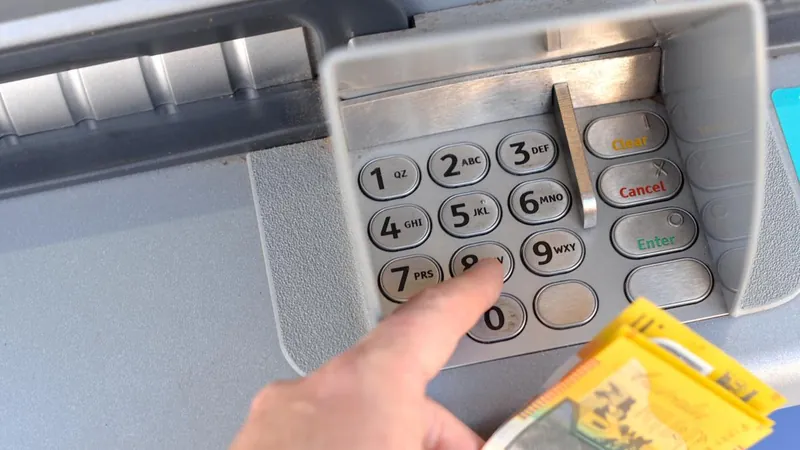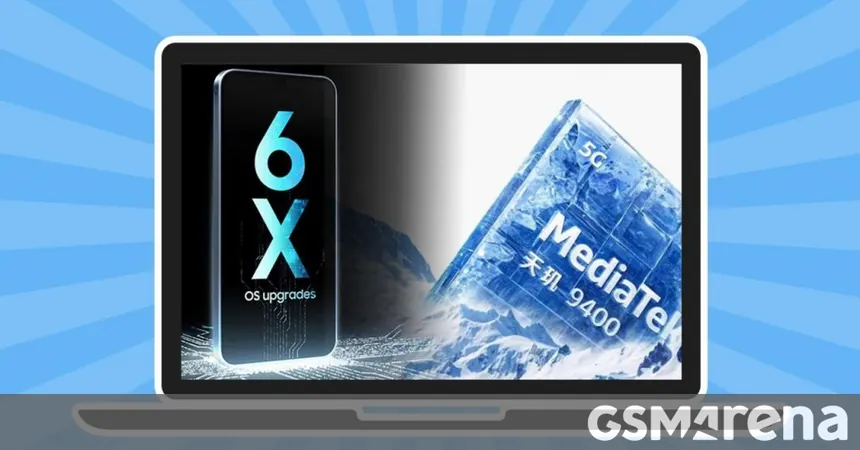
Cash is King Again? Surge in ATM Withdrawals Raises Questions About the Future of Physical Currency in Australia
2024-10-14
Author: Siti
Cash is King Again?
Recent data from the Reserve Bank of Australia indicates that physical currency may be witnessing a resurgence. A notable 2.7 percent increase in ATM withdrawals was recorded between July and August, with transactions climbing from 28.67 million to approximately 29.44 million. This shift suggests more Australians may be turning back to cash amidst a changing financial landscape.
Decline of ATMs
The number of bank-owned ATMs in Australia has plummeted over recent years, dropping from nearly 14,000 in 2017 to around 5,700 by mid-2023. Recently, fewer ATMs have been in operation, prompting cash advocates to urge banks to better accommodate the needs of consumers who still prefer cash.
Statistics and Usage
Jason Bryce, founder of the Cash Welcome campaign, revealed that Australians make about one million ATM withdrawals each day. However, as ATM options dwindle, users face rising fees to access their cash. "Banks continue to close our access to cash, yet Australians are clearly seeking ATMs and going out of their way—and even paying fees—to withdraw their money," Bryce emphasized. He also highlighted the unique advantages of cash, including privacy, reliability, budget management, and immediate transactions—all valued significantly by consumers.
August Withdrawals
This recent bump in August withdrawals amounted to nearly 768,000 additional transactions. While the frequency of ATM withdrawals has stabilized over the past three years, the current numbers are still dramatically lower than the 70 million monthly transactions seen in 2008. According to 7NEWS finance editor Gemma Acton, cash is currently used for about 7 percent of transactions. Despite this figure, cash remains crucial for many people, particularly older citizens and residents of regional areas.
Managing Expenses with Cash
Acton further explained that during ongoing cost-of-living challenges, cash provides a tangible way for many to manage their spending: “It feels much more real to hand over cash and receive change than it does to simply tap a card.” Additionally, rising merchant surcharges have led some consumers to prefer cash, avoiding the hidden costs sometimes added to card transactions.
Shift to Digital Banking
As the cash discussion heats up, Westpac announced it would eliminate its cardless cash withdrawal feature, reinforcing a shift toward digital banking – a trend that has seen other institutions like Macquarie Bank and Bankwest eliminate cash services altogether. While some businesses, including popular chains like Nandos and Gloria Jean’s Coffees, have also moved towards cashless operations, this trend is sparking greater debate about the future of physical money.
Changing Transaction Rates
Acton noted the stark change in cash transaction rates over the years. In 2007, 69 percent of transactions were cash-based, but that figure has dropped dramatically since then. Notably, the COVID-19 pandemic accelerated the transition to contactless payments, but recently, a stabilization in the decline suggests an enduring place for cash as part of everyday transactions.
Future of Cash
As digital payment technologies continue to advance and become more user-friendly, some experts predict a future where cash could be phased out entirely, with forecasts varying from as soon as 2026 to as late as 2030. Nevertheless, Acton believes, “We may head down that track, but I can’t see cash disappearing completely anytime soon.”
Conclusion
With a notable increase in ATM withdrawals and advocates pushing for more access to cash, it seems Australia might not be ready to give up on physical currency just yet. Could this signal a shift back to the cash-driven economy of the past? Time will tell.



 Brasil (PT)
Brasil (PT)
 Canada (EN)
Canada (EN)
 Chile (ES)
Chile (ES)
 España (ES)
España (ES)
 France (FR)
France (FR)
 Hong Kong (EN)
Hong Kong (EN)
 Italia (IT)
Italia (IT)
 日本 (JA)
日本 (JA)
 Magyarország (HU)
Magyarország (HU)
 Norge (NO)
Norge (NO)
 Polska (PL)
Polska (PL)
 Schweiz (DE)
Schweiz (DE)
 Singapore (EN)
Singapore (EN)
 Sverige (SV)
Sverige (SV)
 Suomi (FI)
Suomi (FI)
 Türkiye (TR)
Türkiye (TR)